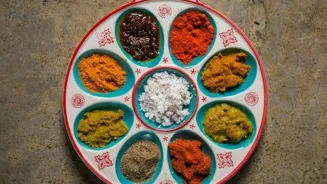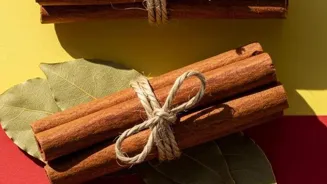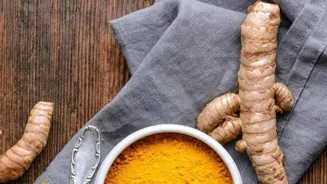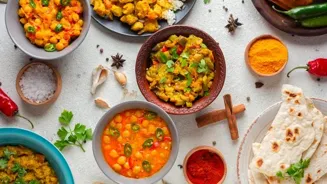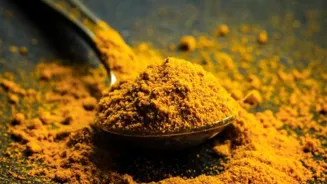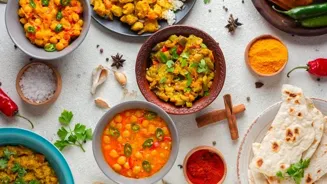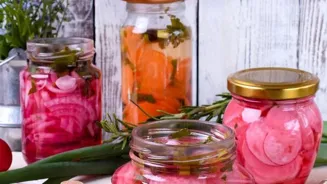Unveiling the Art of Brewing the Perfect Masala Chai: Learn from the Masters!
Delve into the world of masala chai with expert tips and secrets to elevate your tea game!
For many Indians, a cup of steaming
masala chai is more than just a beverage; it's a ritual, a comfort, a warm hug in a mug. From bustling city streets to quiet village homes, chai is the ever-present companion.
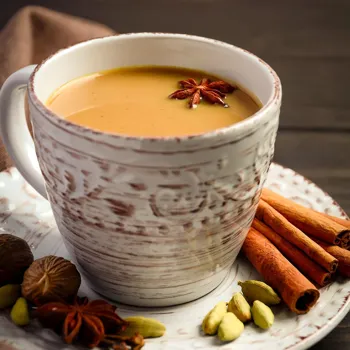
But achieving that perfect, soul-satisfying cup of masala chai is an art, a delicate balance of ingredients, technique, and a little bit of "dil se" (from the heart). We spoke to seasoned chai wallahs and home-brewing experts to unlock the secrets of crafting the ultimate masala chai experience.
So, dust off your chai patti, ready your adrak (ginger), and prepare to elevate your chai game!
Choose robust Assam tea for perfect masala chai; experiment for a unique flavor profile
The foundation of any great masala chai is, naturally, the tea itself. And here, the experts agree: a strong, robust Assam tea is your best bet. Its malty flavour and rich colour provide the perfect canvas for the spices to shine. However, don't be afraid to experiment!
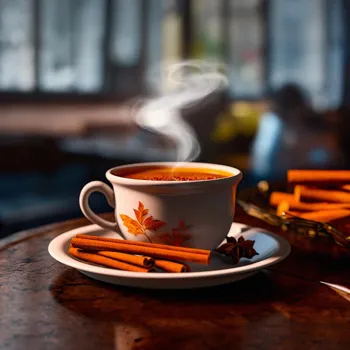
Some prefer a blend of Assam and Darjeeling for a more layered flavour profile, while others swear by the bolder taste of CTC (crush, tear, curl) tea. The key is to choose a tea that you enjoy and that can stand up to the heat and spices without becoming bitter.
Once you have selected your tea, make sure you store it in an airtight container in a cool, dry place. Sunlight, moisture, and strong odours can all quickly degrade the quality of your tea, so proper storage is essential for maintaining its fresh, vibrant flavour.
Many seasoned chai drinkers have discovered that trying different tea varieties is part of the exciting journey, and finding your own perfect blend can be very rewarding.
Spices elevate chai with unique flavors; customize for perfection
Now, let's talk spices! This is where the magic truly happens. Every family has their own closely guarded masala chai recipe, passed down through generations. However, there are some key spices that form the backbone of most blends.
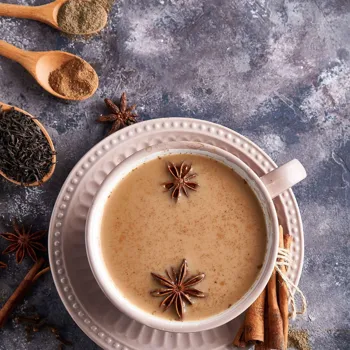
Ginger, cardamom, cloves, and cinnamon are the usual suspects, each contributing its unique character to the mix. Ginger adds warmth and a subtle spicy kick, cardamom lends a fragrant sweetness, cloves provide a touch of pungency, and cinnamon imparts a comforting warmth.
But the possibilities are endless! Some aficionados add black peppercorns for an extra zing, while others incorporate nutmeg, star anise, or even fennel seeds for a more complex and aromatic flavour. Don't be afraid to customize your spice blend to suit your own taste preferences.
Start with the classic combination and experiment with different ratios and additions until you find your perfect balance. And remember, fresh spices are always best!
Whole spices will retain their flavour longer than ground spices, so consider grinding them yourself just before brewing for the most intense aroma and taste.
Brew traditional chai by simmering tea, spices, water, then add milk & sugar to taste
The next thing is technique. The traditional method involves simmering the tea and spices together in water, allowing the flavours to fully meld and infuse. Some chai wallahs even recommend using an earthen pot for an authentic, earthy flavour.
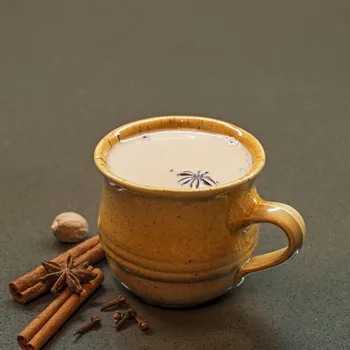
The key is to bring the water to a boil, then add the tea and spices and reduce the heat to a simmer. Let it simmer gently for several minutes, stirring occasionally, until the tea reaches your desired strength and colour. Don't over-boil the tea, as this can make it bitter.
Once the tea has reached the desired strength, add the milk and sugar to taste. The type of milk you use is also a matter of personal preference. Full-cream milk will give you a richer, creamier chai, while skim milk will result in a lighter, less calorie-dense brew.
Some people even prefer to use plant-based milks, such as almond or soy milk, for a vegan-friendly option. And when it comes to sugar, feel free to experiment with different types of sweeteners, such as jaggery or honey, for a more natural and nuanced flavour.
Also, one trick that some add is a pinch of salt whilst brewing, to make the flavours stand out.
Ratio of milk to water is key for chai flavor; add milk to boiling tea
Many argue that the ratio of milk to water is crucial for that perfect balance of flavour and texture. Some prefer a 50/50 split, while others lean towards a more milky or watery concoction. Don’t add tea to boiling milk, instead add milk to boiling tea. Again, it’s all about personal preference.
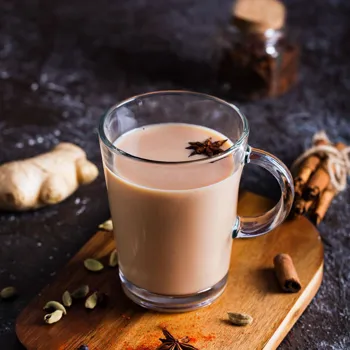
The key is to find the ratio that works best for your taste buds and consistently replicate it. Pay attention to the type of pan you use. A heavy-bottomed pan will help to distribute the heat evenly and prevent the tea from scorching.
This will ensure that your chai is cooked evenly and without any bitter aftertaste. And last but not least, is the perfect sugar quantity. A small amount is enough. Too much sugar will overwhelm the spices and the chai, so don’t add a lot of it.
It should be mild, and the chai flavour should still be noticeable.
Masala chai serving tips for the perfect accompaniment
Now, for the final flourishes, the serving and accompaniment. Traditionally, masala chai is served in small clay cups called "kulhads," which impart a unique earthy flavour to the tea. However, any sturdy cup or mug will do.
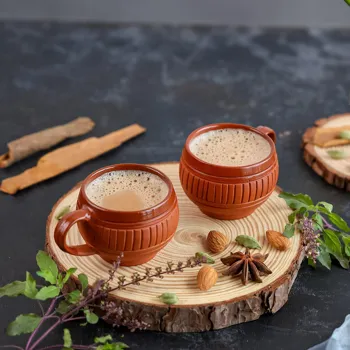
Strain the tea through a fine-mesh sieve to remove any tea leaves or spice particles. This will result in a smoother, more enjoyable drinking experience. And, of course, no cup of masala chai is complete without a little something to nibble on.
Biscuits such as those from Britannia, especially Marie Gold were served with Chai in Indian households. From salted peanuts to crispy mathri to sweet biscuits, the options are endless. The perfect accompaniment will complement the flavour of the chai and enhance your overall experience.
Brewing masala chai: a personal journey of love, experimentation, and sharing joy
Ultimately, brewing the perfect masala chai is a deeply personal journey. There are no hard and fast rules, only guidelines and suggestions. The most important ingredient is your own love and care.

Experiment with different teas, spices, ratios, and techniques until you find the combination that brings you the most joy. And don't be afraid to share your creations with family and friends. After all, chai is best enjoyed in good company, with warmth and laughter all around.
With a little practice and a lot of heart (dil se), you'll be brewing cups of masala chai that will transport you to chai heaven in no time! Each time you brew, you will discover what works and what doesn’t, making each brew better than the last.
AI Generated Content. Glance/InMobi shall have no liability for the content


